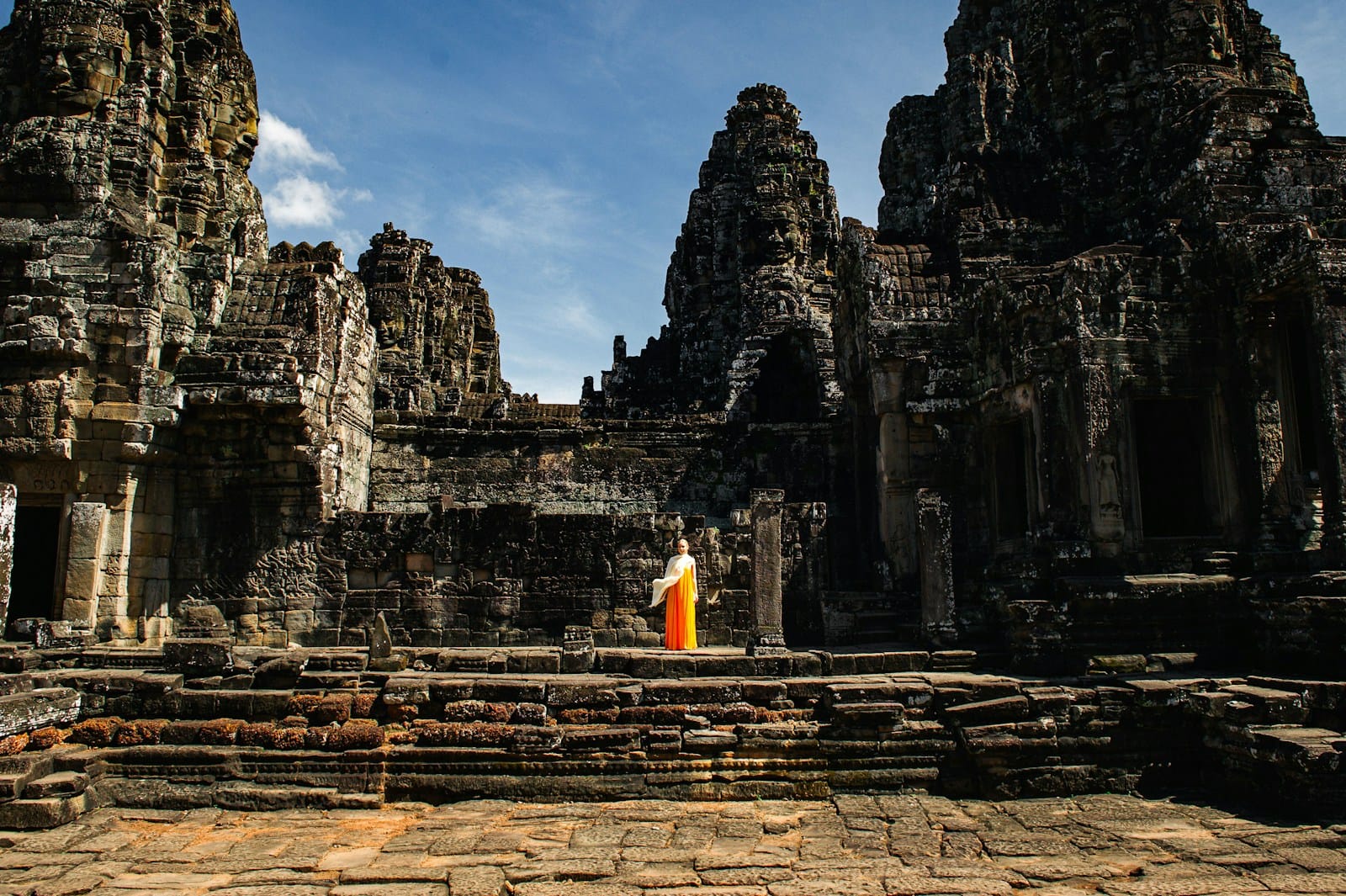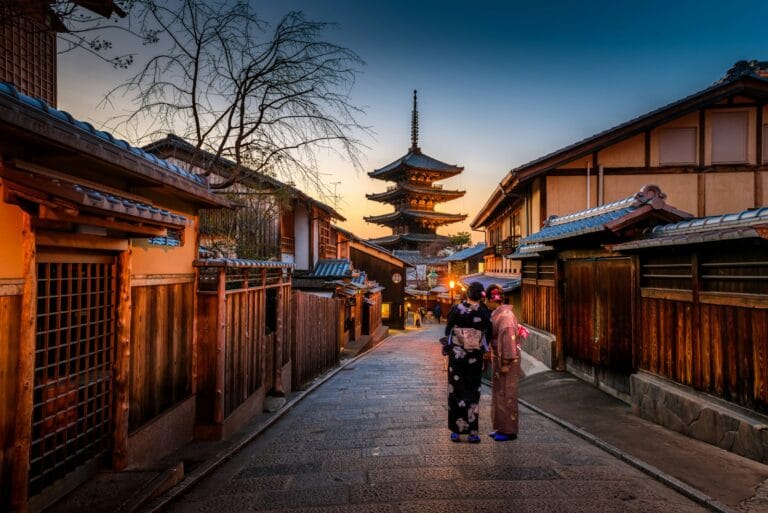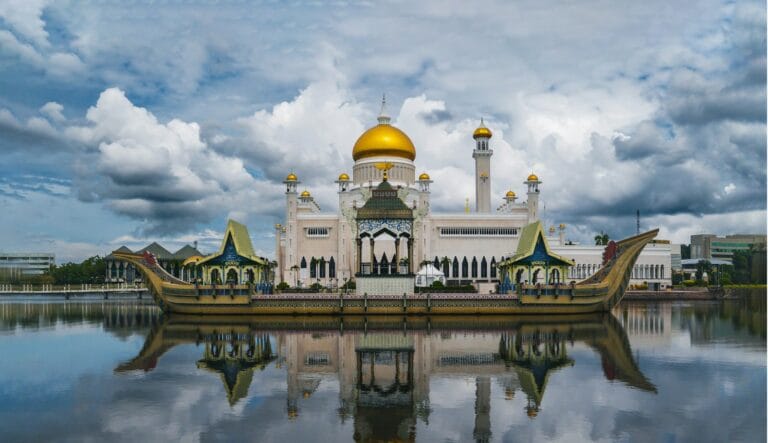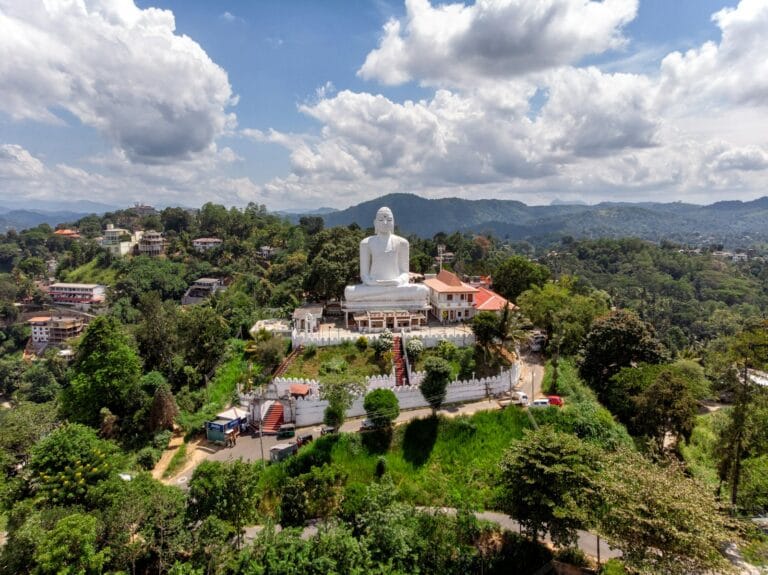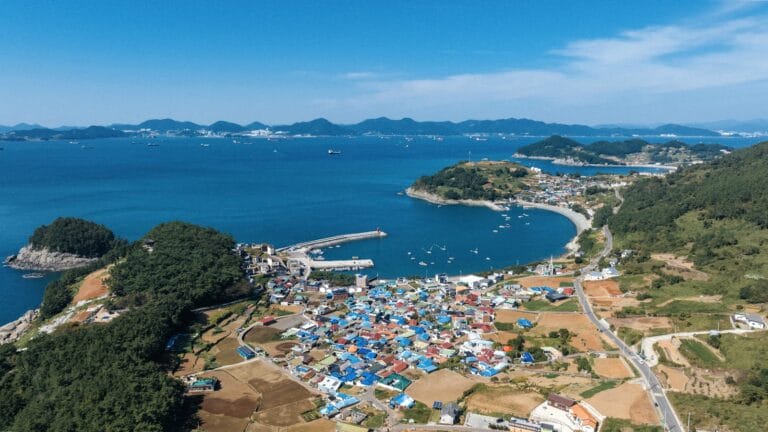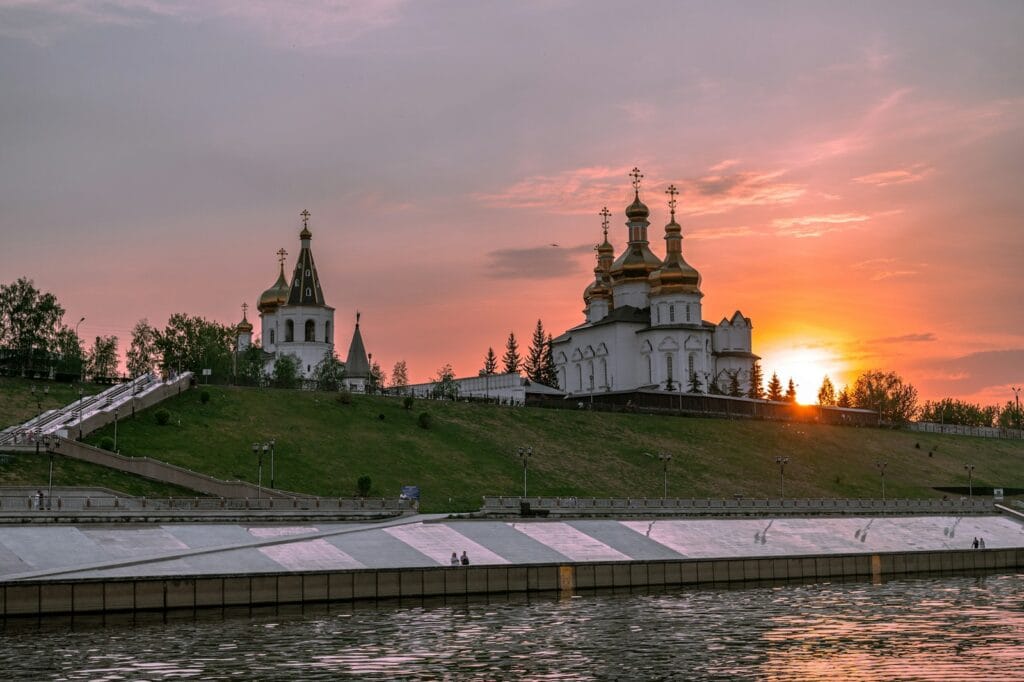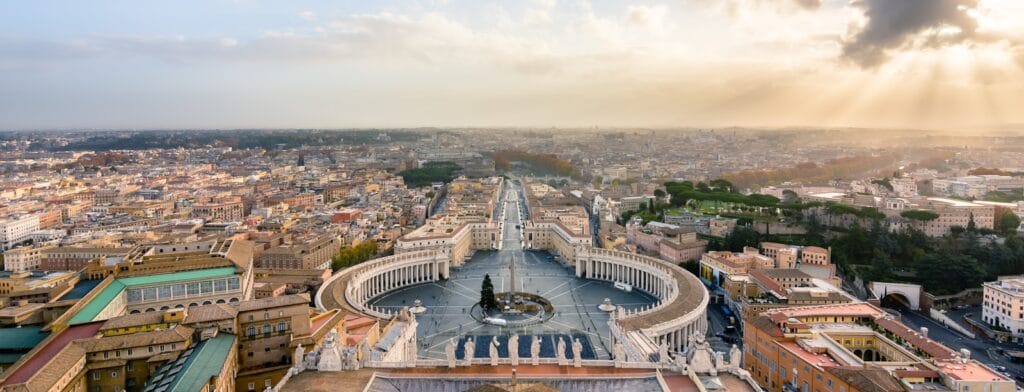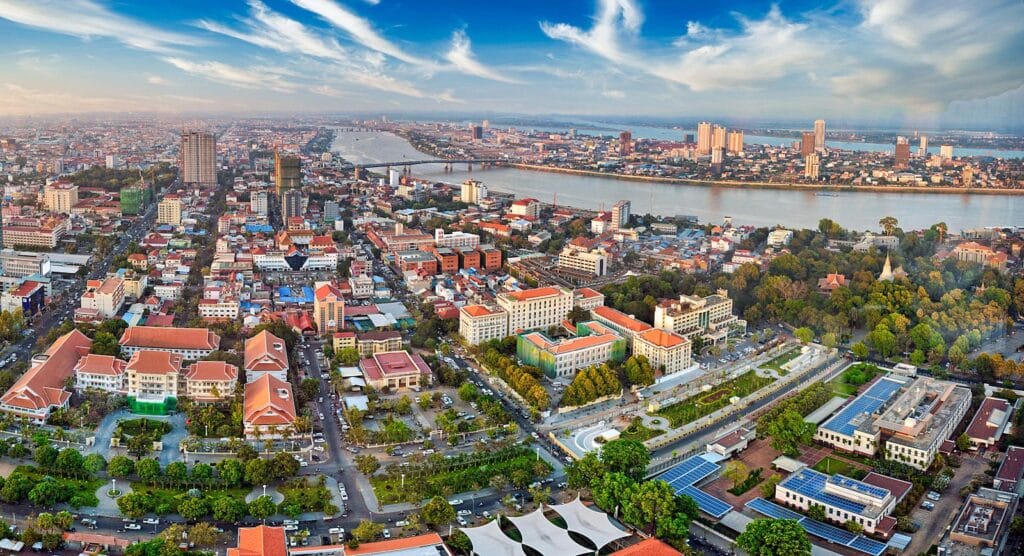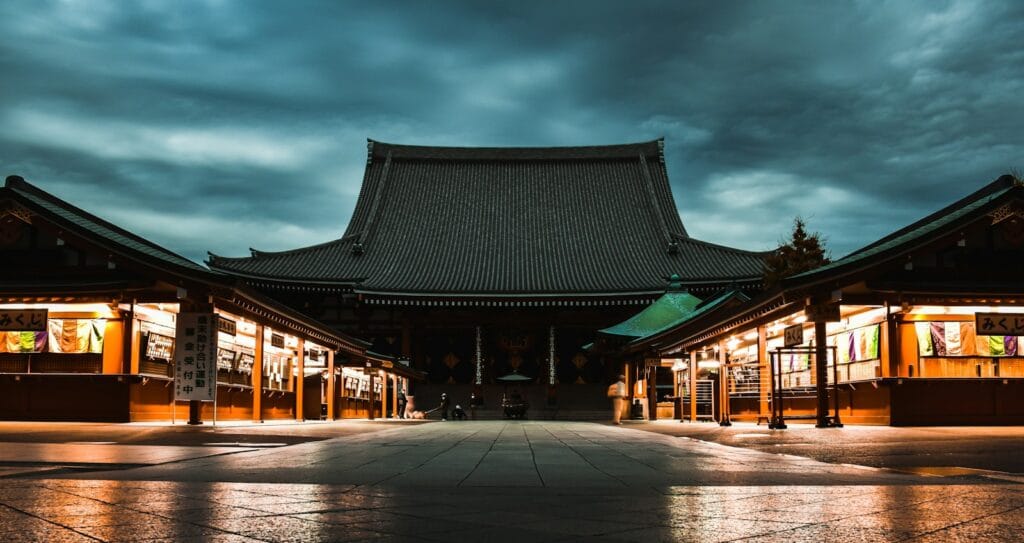Siem Reap Travel Guide: Gateway to Angkor and Cambodia’s Cultural Heart
Discover Siem Reap: What Makes It So Special
Siem Reap is more than just the launchpad to Angkor Wat. This vibrant Cambodian city is a cultural crossroads where ancient temples, floating villages, buzzing night markets, and riverfront cafés collide.
Whether you’re a history buff chasing sunrise at Angkor Thom or a backpacker seeking cheap eats and tuk-tuk adventures, Siem Reap welcomes you with Khmer hospitality, tropical energy, and a rich, soulful past.
Looking to explore more? See our full Cambodia Travel Guide for island getaways, cultural tips, and offbeat adventures beyond Angkor.
Location, Access & Orientation
Siem Reap is located in northwestern Cambodia, roughly 320 km from Phnom Penh and adjacent to the Angkor Archaeological Park.
Key Nearby Regions:
- Angkor Wat: 15 minutes from city center
- Tonlé Sap Lake: 30–60 minutes south
- Phnom Kulen National Park: 90 minutes north
Getting to Siem Reap:
- Siem Reap–Angkor International Airport (SAI): Opened in 2023, 40km outside town; replaces the older REP airport
- Direct flights from major Asian cities: Bangkok, Singapore, Kuala Lumpur, Hanoi, Seoul
- By bus/van: From Phnom Penh (6–7 hours) or Battambang (3–4 hours)
- By boat: Seasonal slow boat from Battambang (6–8 hours on Tonlé Sap)
Tip: Book airport transfers in advance. Taxis and tuk-tuks from SAI to the city center cost $25–35 USD.
A Brief History of Siem Reap
- The name Siem Reap translates to “Defeat of Siam,” a reference to ancient Khmer victories over Thai kingdoms. Though a modest village in the 19th century, the rediscovery of Angkor Wat by French explorers in the 1860s transformed Siem Reap into a global destination.
- Under French colonial rule, the city evolved with art deco buildings, wide boulevards, and heritage hotels. Today, it serves as the tourism capital of Cambodia, balancing historical pride with modern comfort.
- Despite economic struggles after decades of conflict, Siem Reap has reinvented itself — not just through tourism, but with a booming arts scene, sustainable travel projects, and community-driven innovation.
Best Times to Visit Siem Reap
Dry Season (Nov–Mar):
- Peak travel season
- Cool mornings (20–25°C), clear skies
- Best time for sunrise temple visits
Shoulder Season (Apr–Jun):
- Hot and humid (up to 38°C)
- Fewer tourists and lower prices
- Ideal for indoor museum visits or floating villages
Rainy Season (Jul–Oct):
- Afternoon downpours, but lush landscapes
- Great time for photography and boating in Tonlé Sap
- Bring ponchos and waterproof bags
Sunrise Tip: Angkor Wat at sunrise is stunning year-round — arrive by 5:00 AM for the best spots.
Entry Requirements, Fees & Booking Options
Visas:
- Most travelers need a tourist visa (T) – 30-day eVisa available at evisa.gov.kh
- Cost: $36 USD
- Visa-on-arrival is also available at airports
Angkor Pass:
- 1-day: $37 USD
- 3-day: $62 USD (valid for 10 days)
- 7-day: $72 USD (valid for 1 month)
Sold only at the Angkor Ticket Office, NOT at temple gates. Bring your passport for ID photo.
Tour Bookings:
- Group and private tours via:
- Viator
- Local eco-tour providers
Want a personalized temple route? See our Siem Reap Tours page for curated full-day and half-day options.
Top Things to See in and Around Siem Reap
Temples:
- Angkor Wat – Largest religious monument in the world
- Bayon – Famous for 216 smiling stone faces
- Ta Prohm – Tomb Raider temple with overgrown tree roots
- Banteay Srei – Pink sandstone temple known for intricate carvings
- Preah Khan – Grand jungle complex with moats and walkways
Non-Temple Attractions:
- Angkor National Museum – Khmer artifacts and temple history
- Phare, The Cambodian Circus – Social enterprise with storytelling acrobatics
- Wat Bo & Wat Preah Prom Rath – Local pagodas worth exploring
- Old Market (Phsar Chas) – Great for souvenirs, street food, and textiles
- Kampong Phluk Floating Village – Explore stilt homes by canoe
Tip: Don’t try to do more than 3–4 temples in a day. Combine famous sites with lesser-known gems for balance.
Top Experiences & Tours in Siem Reap
- Sunrise Angkor Wat Tour – Arrive before 5:30 AM with a knowledgeable local guide
- Temple Photography Tour – Ideal for content creators and travel bloggers
- Tuk-Tuk Temple Loop – Budget-friendly and fun for small groups
- Food Tour & Night Market Experience – Sample grilled frogs, Khmer curries, and sticky rice
- Bike or E-Bike Adventure – Pedal through rice paddies, villages, and temples
- Floating Village Boat Ride + Sunset – Includes dinner and Tonlé Sap exploration
Local Insight: Hire a certified guide from the Angkor Ticket Office for in-depth historical narration — especially helpful at Angkor Thom and Banteay Srei.
Visitor Tips & Common Mistakes to Avoid
- Dress modestly – Shoulders and knees must be covered for temple entry
- Hydrate constantly – Cambodia’s heat is deceptively draining
- Don’t touch carvings or statues – Many are sacred or fragile
- Skip sunset at Phnom Bakheng unless you go very early — it fills up fast
- Negotiate tuk-tuk rides before starting your trip
Mistake to avoid: Trying to “see it all” in one day — Angkor’s scale is immense. Pick your top 5 temples and pace yourself.
What to Pack for Siem Reap
Essentials:
- Lightweight, breathable clothing
- Hat, sunglasses, and sunscreen
- Scarf or shawl (for temple dress code)
- Comfortable walking shoes or sandals
- Insect repellent
Tech:
- Power bank (long days at Angkor)
- Camera or smartphone with wide-angle lens
- Local SIM card or eSIM for Google Maps and Grab
Optional:
- Poncho or small umbrella (especially in rainy season)
- Refillable water bottle (many cafes offer refills)
- Khmer phrasebook or translator app
Where to Stay in Siem Reap
Budget:
- Onederz Hostel – Central, clean, and sociable
- Lub d Siem Reap – Boutique hostel with pool
- Mad Monkey Hostel – Party atmosphere with rooftop bar
Mid-Range:
- Golden Temple Residence – Excellent service and central location
- Memoire d’Angkor – Stylish and close to Pub Street
- Blanc Smith Residence – Family-friendly with rooftop pool
Luxury:
- Shinta Mani Angkor – Socially conscious, design-forward stay
- Jaya House RiverPark – Green-certified and peaceful
- Park Hyatt Siem Reap – Five-star comfort in the heart of town
Tip: Look for hotels that include airport pickup and Angkor Pass assistance.
Where to Eat in Siem Reap
- Chanrey Tree – Refined Khmer cuisine with riverfront views
- Marum – Social enterprise training local chefs
- Sister Srey Café – Aussie-style brunch and great coffee
- Cuisine Wat Damnak – Award-winning fine dining with seasonal Cambodian ingredients
- Pou Restaurant – Modern Khmer tasting menus
- Night Market Street Stalls – Try fried ice cream rolls, grilled meat skewers, and durian if you dare
Tip: Many high-end restaurants close on Sundays. Reserve in advance during high season.
- Bakong Temple – Pre-Angkorian site in the Roluos Group
- Wat Athvea – Untouristed temple with living monks
- Angkor Silk Farm – See traditional weaving and dyeing techniques
- Phnom Kulen Waterfalls – Sacred mountain, picnic areas, and reclining Buddha
- Beng Mealea – Jungle-covered temple 40 km east — fewer crowds, lots of atmosphere
Want solitude? Beng Mealea and Koh Ker are remote and uncrowded — ideal for temple lovers who’ve already seen Angkor.
Planning Your Visit to Siem Reap
Sample Itinerary (3 Days):
Day 1:
- Sunrise at Angkor Wat
- Visit Angkor Thom and Bayon
- Ta Prohm after lunch
- Dinner and Phare Circus
Day 2:
- Banteay Srei + Cambodian Landmine Museum
- Floating Village boat ride (Kampong Phluk)
- Sunset drinks at Soria Moria rooftop
Day 3:
- Wat Bo and local pagodas
- Visit Old Market + Artisans Angkor
- Cooking class or bike tour
- Night Market or Pub Street fun
Local Tips:
- Use Grab app for rides
- USD is accepted everywhere
- Tipping is not required but appreciated
- Most people speak basic English in tourist zones
Want more guidance? See our Siem Reap Tours or Cambodia Travel Guide to craft your dream itinerary.
Final Tips & Essential Info
- Angkor Pass is essential for all major temples
- Don’t drink tap water — stick to bottled or filtered
- Respect monks and religious sites — ask before photographing
- Watch for heatstroke — wear hats and hydrate often
- Siem Reap’s vibe is chill — slow down and enjoy the pace
Book your Angkor Pass in advance, dress respectfully, and let Siem Reap’s temples, people, and stories leave a lasting impression.
For more Southeast Asia inspiration, eco-friendly tours, and cultural deep-dives — visit our homepage and plan your next journey with confidence.

